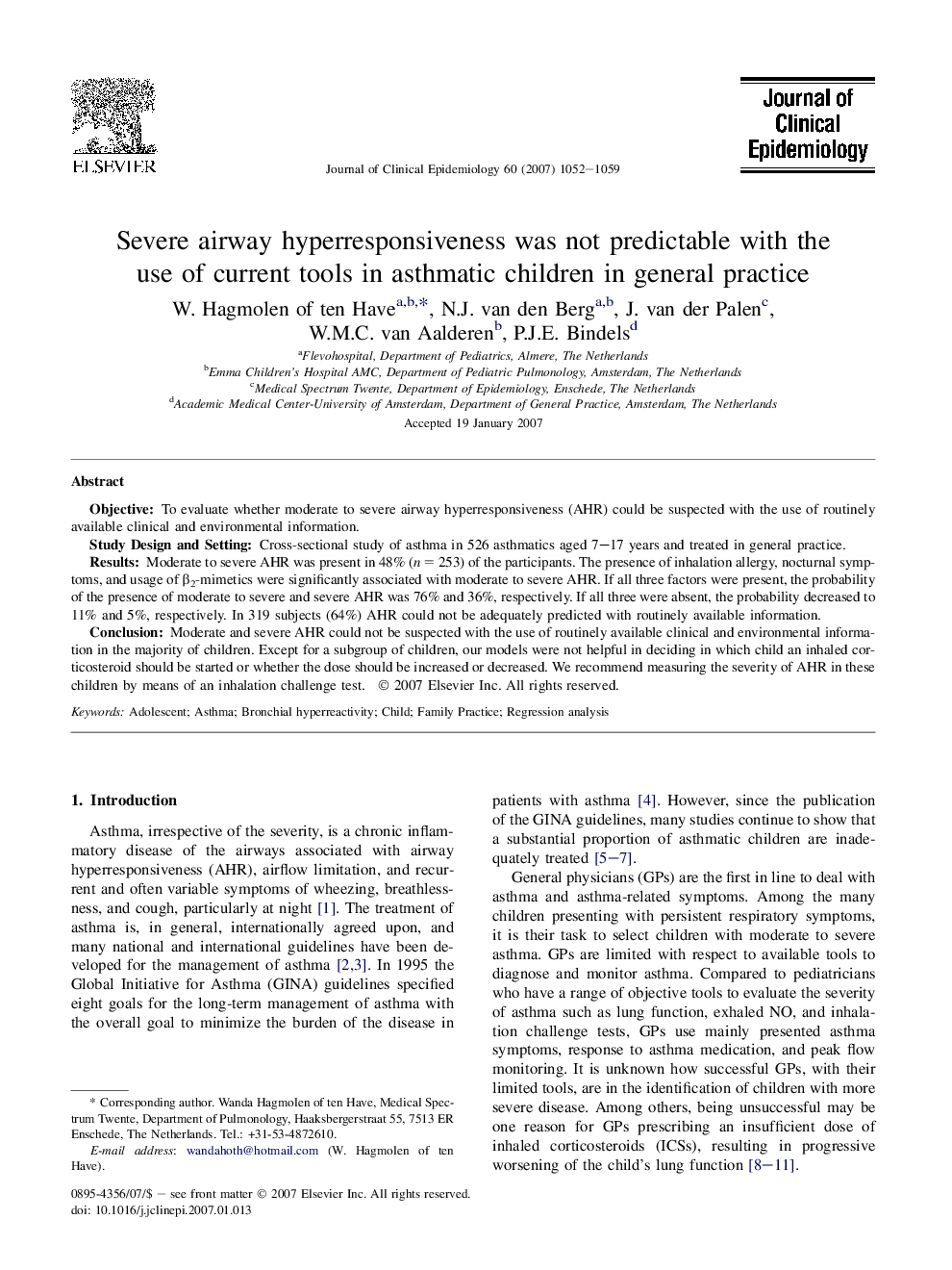| Article ID | Journal | Published Year | Pages | File Type |
|---|---|---|---|---|
| 1083861 | Journal of Clinical Epidemiology | 2007 | 8 Pages |
ObjectiveTo evaluate whether moderate to severe airway hyperresponsiveness (AHR) could be suspected with the use of routinely available clinical and environmental information.Study Design and SettingCross-sectional study of asthma in 526 asthmatics aged 7–17 years and treated in general practice.ResultsModerate to severe AHR was present in 48% (n = 253) of the participants. The presence of inhalation allergy, nocturnal symptoms, and usage of β2-mimetics were significantly associated with moderate to severe AHR. If all three factors were present, the probability of the presence of moderate to severe and severe AHR was 76% and 36%, respectively. If all three were absent, the probability decreased to 11% and 5%, respectively. In 319 subjects (64%) AHR could not be adequately predicted with routinely available information.ConclusionModerate and severe AHR could not be suspected with the use of routinely available clinical and environmental information in the majority of children. Except for a subgroup of children, our models were not helpful in deciding in which child an inhaled corticosteroid should be started or whether the dose should be increased or decreased. We recommend measuring the severity of AHR in these children by means of an inhalation challenge test.
